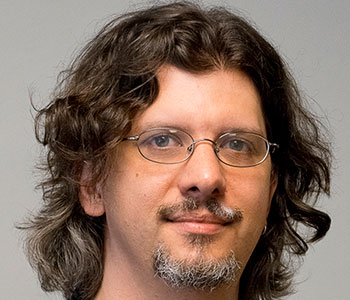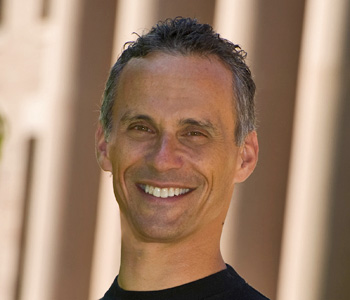Samuel Jay Keyser
The Mental Life of Modernism: Why Poetry, Painting, and Music Changed at the Turn of the Twentieth Century
The MIT Press
240 pages, 6 x 9 inches
ISBN 978 0262043496
I don’t believe in coincidences, at least not big ones. That’s why the sea change the sister arts of poetry, painting, and music underwent at the turn of the 20th century has always intrigued me. All of them veered off course at virtually the same time and in virtually the same way. To paraphrase Yul Brynner in The King and I, “It was a puzzlement.” It was as if a group of high achieving artists had met, mafia-style, in some non-disclosed location to plan mischief against the art world. It had all the hallmarks of a conspiracy. They would do something so radical, so scandalous that it would turn the art world on its head.
And they did.
In a remarkably short period of time poetry, painting, and music abandoned all that was tried and true. In the words of Steven Pinker (The Blank Slate, 2002, pp. 409-10):
All the tricks that artists had used for millennia to please the human palate were cast aside. In painting, realistic depiction gave way to freakish distortions of shape and color and then to abstract grids, shapes, dribbles, splashes, and, in the $200,000 painting featured in the recent comedy Art, a blank white canvas… In poetry the use of rhyme, meter, verse structure and clarity were frequently abandoned. In music, conventional rhythm and melody were set aside in favor of atonal, serial, dissonant, and twelve-tone compositions.
Whether the change was for better or worse, I am much more interested in the nature of the change. Pinker describes it in terms of human nature, “Modernism certainly proceeded as if human nature had changed.” His allusion to human nature in understanding Modernism is right on target.
Every account that I know of views Modernism as a cultural phenomenon. Realism in painting (Vasari’s mimesis) was muscled aside by the invention of photography. Thus, the painter Paul Delaroche in 1839 is supposed to have declared upon seeing a daguerreotype, “From today, painting is dead.”
Other cultural explanations have been proposed. They range from the impact of the Industrial Revolution that led to the introduction of ordinary folk as subjects as in Jean-François Millet’s The Sower, The Gleaners, and the Potato Harvest to psycho-analytic accounts such as Kandel’s Freudian take on Déjeuner sur l’herbe. In music, Richard Taruskin, influenced by Ezra Pound, attributed Arnold Schoenberg’s innovations to “apocalyptic presentiments” at the end of the 19th century.
There is, however, another way to look at what happened. This book is an attempt to put that way on the table. One can view works of art in terms of unconscious knowledge shared by the artist and the audience. Theorists talk about this knowledge in terms of rules. But they don’t mean rules like “Keep off the grass” or “Never end a sentence with a preposition.” The rules they (and I) have in mind are hypotheses about the character of that unconscious knowledge in terms of which artists do what they do. The artist uses this knowledge to create works of art. The audience uses it to enjoy works of art. The transaction is exactly like the one we are engaged in now. You understand what I write because we share a body of unconscious knowledge called the English language. This knowledge enables us to understand that this sentence backwards is not a product of our shared body of knowledge while it is perfectly intelligible in the other direction. Just now I used this unconscious knowledge to create this sentence—writer as artist. You used it to understand this sentence—reader as audience. Art is an extension of that kind of mental activity.
As many great artists have noted (Stravinsky, T.S. Eliot) there can be no art without rules (read ‘unconscious knowledge’). I would like to suggest that Modernism is the name given to what happened when shared rules were abandoned. It was as if artists had stopped speaking a common language and started using a variety of new ones, ones that audiences were forced to learn and keep up with. Between the time of Manet and Andy Warhol there were over 500 manifestoes of what constitutes a work of art, Dadaism being just one of them. Keeping up was no mean feat.
If the linguistic revolution inaugurated by Noam Chomsky in his seminal 1957 monograph Syntactic Structures teaches anything, it is the role that rules play in our understanding of how the brain works. This perspective is absent from much contemporary work in art criticism and especially in the neuroscience of aesthetics. Obviously, I think these fields would benefit from its introduction. This book is an example of how that might be done.
Our knowledge of language can be represented in terms of a systematic grammar and not just as a collection of arbitrary conventions. Over the years theorists have extended this way of looking at the brain to include art. Lerdahl and Jackendoff’s ground-breaking A Generative Theory of Tonal Music (MIT Press, Cambridge Massachusetts, 1983) is an important case in point. They have shown with great precision what rule systems in music look like. The assumption is that these rule systems are internalized in our brains just as the rules of grammar are. This doesn’t mean that the rules are literally to be found in mental circuitry the way they might be found in the pages of a book. But it does mean that their counterparts are there. Indeed, one of the great tasks of the 21st-century will be to show how such unconscious knowledge is represented in the “wetware” of the brain.
When artists abandoned the set of rules that they shared with their audiences, they replaced them with private formats. Audiences had to learn what these private formats were in order to enjoy the art that they produced. In this sense, much modern art has been an acquired taste. It is no accident that college courses in the poetry of John Ashbery or the music of Arnold Schoenberg or the painting of Jackson Pollock were a side effect of Modernism. Prior to the sea change it was perfectly obvious what a poet was saying or a painter depicting. Afterwards, like Dante in purgatory, people needed a guide.
There is a punchline in all of this. Modernism is not sui generis. I believe it is the same phenomenon that led to the abandonment of the mechanical philosophy of the Galilean revolution and of Descartes in the 17th century when Newton’s postulation of action at a distance required the same kind of mental gymnastics; namely, abandoning the idea of an intelligible world for the idea of an intelligible theory. In short, Newtonianism and Modernism are work-arounds devised by the brain on encountering its own limitations.
As an undergraduate, I was a student of English literature. I loved the subject matter, but not the discipline. I was interested in explanation. Practitioners of the trade were interested in interpretation. It is not surprising that I turned to modern linguistics, a field devoted to the tool that gives rise to literature, but devoted to understanding the nature of the tool and what it says about human nature. It was also not surprising that I would return to literature. But what was a surprise was that thinking about things linguistically would shed light on the nature of Modernism.
This is a book that I could not have written at the beginning of my professional life, but only at the end. I’m very glad I have written it. Having pondered the mystery of Modernism for most of my professional life, I feel as if this book is to my need for explanation what Androcles was to his lion.
If an idle browser were to thumb through my book, say in a bookshop somewhere, I would hope that Chapter 3 catches her eye. It contains a number of surprises, things that she will have looked at but not necessarily seen, like what is hidden in the FedEx logo or in the famous Silence of the Lambs motion picture poster. Even if the browser doesn’t buy the book, she will take away something that she probably didn’t know before and won’t easily forget.
Both the FedEx logo and the famous Silence of the Lambs motion picture poster contain hidden structures that artists put into their work without any expectation that their audiences would ever find them. These are “Easter eggs” in the software sense of the term. This chapter will show that the practice of embedding Easter eggs in a work of art can be found in the poetry of Geoffrey Chaucer and in the music of Guillaume de Machaut. “Easter eggs” go back even farther, certainly to the Old Testament. Building secret structures into works of art was at best a pastime in the past. It was something artists did simply because they could. After the shift to Modernism, this practice became central to the work of art.
I would also hope that Chapter 12 would catch a browser’s eye. It is the real point of the book; namely, that Modernism and Newtonianism are two sides of the same coin. What the book is really about is the monumental consequences that transpire when artists and scientists encountered the limitations of the brain. This chapter explores the implications of this encounter. Have we as a species reached the limits of our understanding? Richard Feynman commented on quantum mechanics in this fashion:
We can’t pretend to understand it since it affronts our commonsense notions. The best we can do is to describe what happens in mathematics, in equations, and that’s very difficult. What is even harder is trying to decide what the equations mean. That’s the hardest thing of all.
It is a reasonable thing to ponder. Quantum mechanics tells us that the result of an experiment done in the past cannot be understood until some point in the future. It tells us that two photons billions of miles apart are somehow connected, what Einstein called “Spooky action at a distance.” Just as Newton’s action at a distance wrought a sea change in science by virtue of the brain coming up against its own limitations, quantum mechanics is doing the same thing in our lifetime, only this time there may be no work around.
I would consider the book a modest success if readers were to come away with two notions. The first is that natural functions of the brain like face recognition, metrical poetry, tonal music, and the ability to use natural language are illuminated by thinking of them in terms of abstract representation. I hope readers will come to appreciate how this perspective can shed light on important upheavals in the history of ideas.
Of course, a great deal more needs to be done. For example, we know that the fusiform gyrus is an area of the brain where face recognition begins. But what precisely does that area do? Does it search for circles within circles in a kind of emoji hunt? Once it comes up with a facial representation in some notation or other, what does it do? Is there a face lexicon paralleling the way words are stored in a mental lexicon? How does the brain link a face to a name? What does it really mean to say, “The name is familiar but I can’t place the face?”
A friend of mine, Mike Strauss, grew a beard a year or so after we first met. He kept the beard for a long time. Then he decided to shave it off. But being a fellow with a quirky curiosity, he wondered what would happen if he only shaved one side of his face. He was living in a commune at the time. He reported that his housemates took 11 hours to notice. I can believe that. He came for a visit one evening with his face still half-shaved. It took me fully 5 minutes before I realized what he had done. The effect on me was startling. Here is a possible scenario of what happened. When we first met, I stored a representation of his face in my “face lexicon.” From that point on whenever we met, I did not reconstruct his face, but accessed the one in my face lexicon. Perhaps when he grew a beard, I even stored a second image, like a new meaning for an old word. When he came for a visit, perhaps I didn’t actually look at his half- shaved face. But rather I short-circuited the process by going directly to my face lexicon and “looked at” the first image of him that I stored. It was only when, for whatever reason, my fusiform gyrus rebuilt his image that evening and my storage program compared the new image to the ones already in storage that I noticed the disparity.
Whatever the worth of this scenario, it does suggest that what actually happened will never be answered by just looking at the brain. Rather we need to step back and try to come up with an abstract representation that successfully models face recognition behavior. That will tell us what to look for when we start probing brain cells. So my first point is this: abstract representation can be extraordinarily enlightening. It can even shed light on convulsions in the history of ideas.
The second notion also relates to the history of ideas. If post-Newtonian science and Modernism are instances of the brain coming up against its own limitations, perhaps there are others. For example, modern economics is highly mathematical. One might even think of it as a branch of applied mathematics. But it wasn’t always a branch of mathematics. When did that shift occur? And why? Perhaps the change was a natural one in the normal course of things. But maybe not. Maybe commonsense notions of how human beings behave in the marketplace were simply too slippery to get a handle on.
I remember going to a market early one morning in Luang Prabang, Laos. I stopped at one stand and the owner wouldn’t let me leave until I bought something. He kept lowering the price and the more I resisted, the lower he went. Finally, he explained that I was his first customer and that he was bound to give me a “morning price” because, if he didn’t sell me something, he would have bad luck for the rest of the day. I didn’t have the heart not to buy something.
Richard Feynman was talking about quantum mechanics when he said “The best we can do is to describe what happens in mathematics…” Perhaps the sentiment applies to modern economics as well.
It is even worth thinking about the history of ideas from the opposite perspective. What about bodies of knowledge that are change resistant, religions, for example? Because of their adherence to immutable texts—the Bible, the Talmud, the Koran, the Agamas, the Avesta, the Book of Mormon, etc.—followers of these texts do not change. One consequence is that they will not move beyond the natural state of cognition that prevailed when the texts were written. There might be something cognitively significant in that. It can’t be an accident that the vast majority of humanity believes in the teachings of an immutable text. Perhaps the attraction of religious thinking lies in the mere fact that its texts are immutable, rather than in what they contain. Maybe this is what is behind Matthew 16:18 where Jesus tells Peter, “You are Peter, and on this rock, I will build my Church.” Nothing says immutability like a rock.
My second point, then, is this: if the study of Modernism and modern science in terms of the natural limits of the brain has borne fruit, then perhaps a similarly oriented study of the histories of other areas of human endeavor might likewise prove fruitful. Unfortunately, I am ill-equipped to undertake the search. I will have to leave that in the capable hands of like-minded others. When Andrew Marvell wrote:
Had we but world enough and time,
This coyness, lady, were no crime.
he wasn’t just talking about seduction.




We don't put paywalls. We don't distract you with ads. We don't sell your data.
Please help to keep this running!